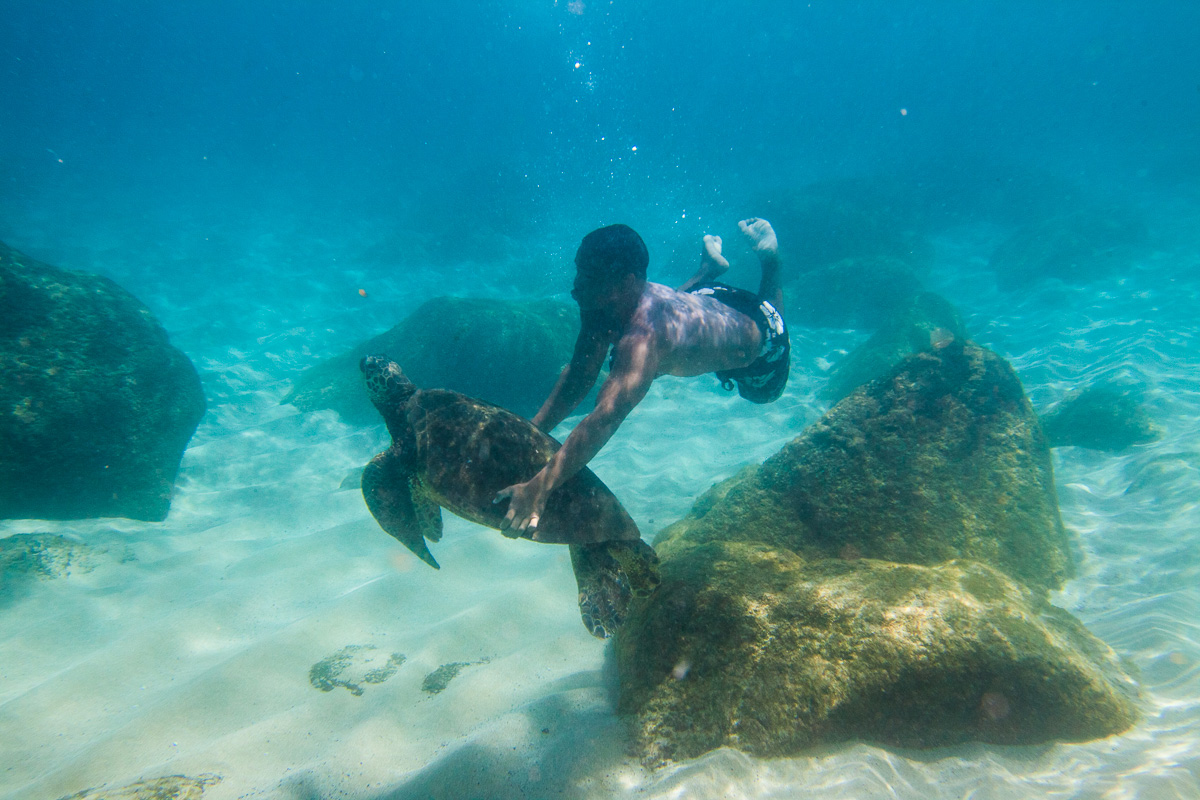Yes, it is illegal to touch a sea turtle as it can disturb or harm the animal. Interfering with sea turtles is against the law in many places due to their protected status.
Sea turtles are endangered species and are protected by various laws to ensure their conservation and survival. Touching them can disrupt their natural behaviors, cause stress, and potentially harm them. It’s important to respect these creatures and observe them from a safe and respectful distance to help preserve their habitats and population.
Understanding the legal implications and ethical considerations surrounding sea turtles is crucial for protecting these magnificent creatures for future generations.
Legal Perspective
Touching sea turtles is illegal as it disrupts their natural behavior and can harm them. It is essential to respect these protected species to ensure their well-being and conservation. Violating these regulations can result in legal consequences.
Sea turtles are some of the most magnificent creatures in the world, and they are also some of the most protected. In the United States, touching a sea turtle can result in serious legal consequences. This section will explore the legal perspective of protecting sea turtles, including their protected species status and the state and federal laws that safeguard them.Protected Species
Sea turtles are classified as protected species under the Endangered Species Act of 1973. This means that they are legally protected from harm, harassment, or exploitation. The act protects all seven species of sea turtles, including the green, hawksbill, Kemp’s ridley, leatherback, loggerhead, olive ridley, and flatback. The act also protects the turtles’ habitats, including nesting beaches and marine environments.State And Federal Laws
The Endangered Species Act is not the only law that protects sea turtles. Both federal and state laws exist to safeguard these animals. For example, the Marine Turtle Protection Act, passed in 1991, prohibits the taking, possessing, or selling of sea turtles or their eggs. Additionally, many states have their own laws that protect sea turtles. For example, in Florida, it is illegal to touch or disturb sea turtle nests or hatchlings. Violating these laws can result in severe penalties, including fines and imprisonment. For example, violating the Endangered Species Act can result in a civil penalty of up to $50,000 per violation and a criminal penalty of up to $100,000 and one year imprisonment for an individual, and up to $200,000 for an organization. In conclusion, it is illegal to touch sea turtles in the United States because they are protected under the law. Violating these laws can result in severe consequences. As responsible citizens, it is our duty to protect these magnificent creatures and their habitats, so they can continue to thrive for generations to come.
Credit: www.reddit.com
Consequences Of Touching Sea Turtles
Touching sea turtles can have severe consequences on both the individual turtle and the overall population. It is important to understand the impact of such actions to protect these endangered marine creatures.
Disturbance To Habitat
Touching sea turtles can disrupt their natural habitat and nesting sites, leading to potential harm to their reproductive cycle.
Impact On Population
Handling sea turtles can stress them, affecting their health and behavior, ultimately contributing to a decline in their population.
Educational Campaigns
As part of the effort to protect sea turtles, educational campaigns play a crucial role in raising awareness about the importance of not touching or disturbing these majestic creatures. Educational programs are designed to inform the public about the legal and ethical implications of interacting with sea turtles, ultimately aiming to reduce human impact on their natural habitat.
Awareness Programs
Awareness programs are essential in educating the public about the significance of preserving sea turtle habitats and the consequences of interfering with these creatures. These programs often include interactive workshops, informative presentations, and engaging visual materials to effectively convey the message. By highlighting the vulnerability of sea turtles and the legal protections in place, these initiatives seek to foster a sense of responsibility and respect for these endangered species.
Community Involvement
Community involvement is a key aspect of educational campaigns focused on sea turtle conservation. Local organizations, schools, and businesses collaborate to spread the message about the legal implications of touching sea turtles and the broader impact on marine ecosystems. Through community events, beach clean-ups, and collaborative initiatives, individuals are encouraged to actively participate in safeguarding the well-being of sea turtles and their habitats.
Enforcement And Penalties
Fines And Legal Actions
When it comes to touching sea turtles, there are strict regulations in place to protect these endangered creatures. Violating these regulations can result in hefty fines and legal repercussions. It’s crucial to understand the potential penalties associated with such actions to deter individuals from engaging in illegal activities.
Enforcement Agencies
Enforcement agencies play a vital role in monitoring and enforcing laws related to sea turtle protection. These agencies are responsible for investigating violations and taking appropriate legal actions against offenders. Understanding the role of enforcement agencies can help in promoting compliance with the laws safeguarding sea turtles.
Research And Conservation Efforts
Research and conservation efforts play a crucial role in protecting sea turtles and their habitats. Through dedicated initiatives, scientists and environmental organizations aim to understand these creatures’ behaviors and movements to ensure their survival for future generations.
Tracking And Monitoring
One of the key aspects of sea turtle conservation is tracking and monitoring their movements. Researchers utilize advanced technologies such as satellite tags and GPS devices to gather data on migration patterns, nesting sites, and foraging areas. By understanding their behavior and habitats, conservationists can implement targeted protection measures.
Habitat Protection
Preserving the natural habitats of sea turtles is essential for their survival. Coastal development, pollution, and climate change pose significant threats to their nesting beaches and feeding grounds. Conservation efforts focus on establishing marine protected areas, regulating coastal development, and promoting sustainable fishing practices to safeguard these vital habitats.

Credit: www.civilbeat.org
Human-sea Turtle Interactions
Human-sea turtle interactions have become a prominent issue in the conservation and protection of these magnificent creatures. As sea turtles face numerous threats from human activities, it is essential to address the impact of our actions on their well-being and survival. From responsible tourism practices to beach clean-up initiatives, various efforts are being made to minimize the negative effects of human interaction on sea turtles.
Responsible Tourism
When visiting areas where sea turtles nest or forage, it’s crucial to engage in responsible tourism practices. This includes refraining from touching or disturbing sea turtles, keeping a safe distance, and avoiding flash photography that may startle or disorient them. By respecting their natural behavior and habitat, we can contribute to the conservation of sea turtles and their ecosystems.
Beach Clean-up Initiatives
Participating in beach clean-up initiatives is another meaningful way to support sea turtle conservation. Removing debris and plastic pollution from coastal areas helps create safer nesting environments for sea turtles and reduces the risk of entanglement or ingestion of harmful materials. By taking part in organized clean-up efforts or simply picking up litter during beach visits, individuals can make a tangible difference in protecting these vulnerable marine species.

Credit: www.civilbeat.org
Conclusion
Respecting sea turtles is crucial to their survival. Remember, touching them can harm or stress them. Be mindful of the laws protecting these amazing creatures. Let’s all play a part in preserving our oceans and the wildlife that inhabits them.
Together, we can make a positive impact.






Leave a Reply